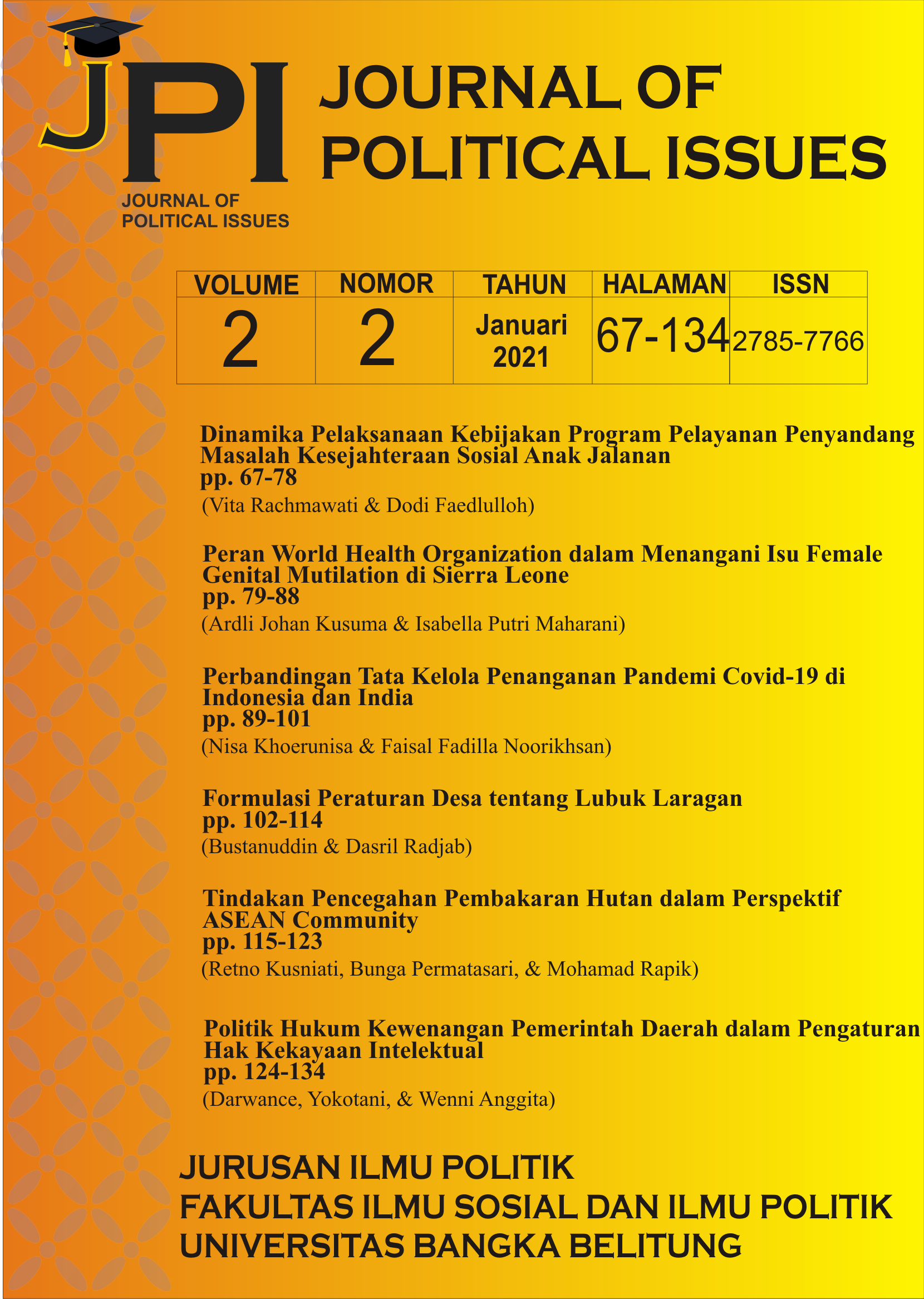Dynamics of Policy Implementation for Street Children Social Welfare Problems
Dinamika Pelaksanaan Kebijakan Program Pelayanan Penyandang Masalah Kesejahteraan Sosial Anak Jalanan
Abstract
This research is motivated by the relatively high number of people with social welfare problems for street children in North Jakarta compared to other cities in the DKI Jakarta Province. Therefore, serious efforts from the government are needed to overcome this problem. This study discusses the dynamics of the implementation of the policy on the service program for people with social welfare problems for street children in North Jakarta.. This study uses a qualitative method. To select informants, researchers used purposive sampling. To measure the validity of the study, the researcher used source triangulation by comparing data from observations and interviews, conditions with people's perspectives, and interviews with document content. The results showed that the communication process in the implementation of handling street children has not been implemented properly. This occurs because there are conditions in the delivery of information that are still ineffective. Furthermore, resources related to staff, information, authority, and facilities also each have shortcomings so that they lack effectiveness in terms of policy resources. In the context of disposition, it shows that policy implementers have not yet optimal responses in implementing policies on handling street children in North Jakarta. Meanwhile, from the bureaucratic structure, the implementing institution has its own SOP. The implementation of policies on handling street children in North Jakarta has not experienced fragmentation.
Downloads
References
Astri, H. (2014). Kehidupan anak jalanan di Indonesia: faktor penyebab, tatanan hidup dan kerentanan berperilaku menyimpang. Jurnal Aspirasi, 5(2), 145–155.
Azmiyati, S. R. (2014). Gambaran Penggunaan Napza Pada Anak Jalanan Di Kota Semarang. Kemas: Jurnal Kesehatan Masyarakat, 9(2), 137–143. https://doi.org/https://doi.org/10.15294/kemas.v9i2.2841
Edward III, G. C. (1980). Implementing Public Policy. Congressional Quarterly Press.
Gumanti, L., Permana, I., & Sutarjo, M. (2020). Implementasi Kebijakan Program Pembinaan Anak Jalanan di Dinas Sosial Kabupaten Cirebon. Jurnal Ilmiah Publika, 8(1), 9–15.
Khoirunnisa, Ratna, E., & Irawati. (2020). Perlindungan Hukum Anak Terlantar Atas Hak Anak Mendapatkan Jaminan Kesehatan. Notarius, 13(1), 546–556.
Mambang, & Wahyudi, H. (2016). Implementasi Kebijakan Gelandangan, Pengemis, Tuna Susila dan Anak Jalanan di Kota Palangka Raya Provinsi Kalimantan Tengah. Pencerah Publik, 3(2), 1–8.
Moleong, L. J. (2004). Metode Penelitian Kualitatif. PT. Remaja Rosdakarya.
Nazir, M. (2009). Metode Penelitian. Ghalia Indonesia.
Nurahmah, J. A. (2020). Implementasi Kebijakan Peraturan Daerah Nomor 14 Tahun 2017 Dilihat Dari Aspek Komunikasi Pada Dinas Lingkungan Hidup Kabupaten Tabalong. JAPB: Jurnal Administrasi Publik Dan Bisnis, 3(2), 1016–1030.
Suleman, S., Pakaya, R., & Daud, Y. (2019). Pendataan Penyandang Masalah Kesejahteraan Sosial (Pmks) Berbasis Web. Jurnal Teknologi Informasi Indonesia, 4(1), 30–39.
Suyanto, B. (2013). Masalah Sosial Anak. Kencana Pranada Media Group.
Winarno, B. (2008). Kebijakan Publik Teori & Proses. MedPress.
Copyright (c) 2021 Vita Rachmawati, Dodi Faedlulloh

This work is licensed under a Creative Commons Attribution-NonCommercial-ShareAlike 4.0 International License.
- Authors retain copyright and grant the journal right of first publication with the work simultaneously licensed under a Creative Commons Atribusi-Non Commercial-Share Alike (CC BY-NC-SA).
- Authors are able to enter into separate, additional contractual arrangements for the non-exclusive distribution of the journal's published version of the work (e.g., post it to an institutional repository or publish it in a book), with an acknowledgement of its initial publication in this journal.
- Every publication (printed/electronic) are open access for educational purposes, research, and library. Other than the aims mentioned above, the editorial board is not responsible for copyright violation.

















